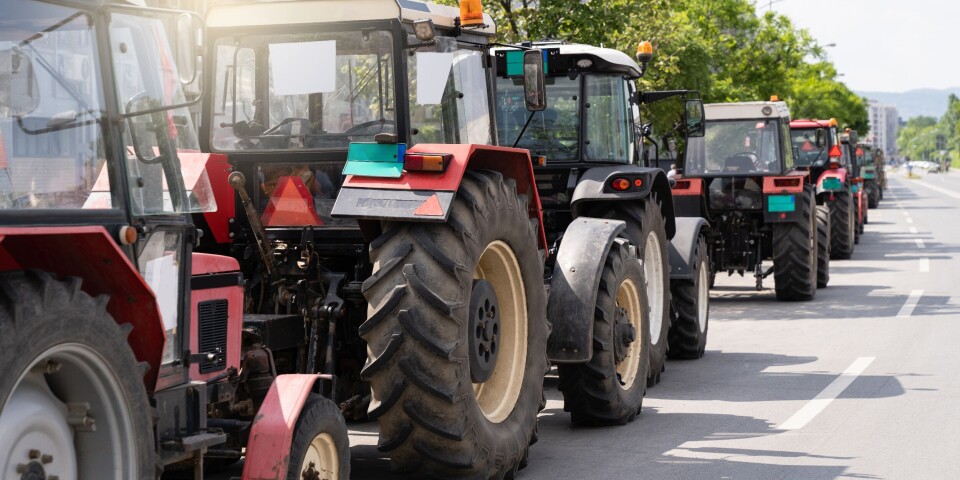-
Five iconic French dishes from different regions
Explore the rich culinary heritage of France with these traditional dishes, from cassoulet in Occitanie to cari poule in La Réunion, showcasing the country's geographic and cultural diversity
-
Back to the future in France with hip auberges de jeunesse
‘Posh’ hostels are springing up to cater for today’s tourists
-
Step back in time for some ‘dinosaur’ planting in your French garden
Captivated in the garden this month by one species of plant that dates back 200 million years, and another which is one of the oldest flowering plant families on the planet
Less speed, more taste behind Slow Food trend
Every edition we assess an aspect of the French zeitgeist. This month: the movement for values in food sourcing, by Jane Hanks

The Slow Food Movement is not just about taking time to enjoy your meal, something the French are already very good at. It is also about eating the kind of food that has been reared, produced and cooked with care and making sure old varieties and breeds are appreciated and supported so that we continue to have a wide range of foods to choose from.
In France this anti- Fast Food movement is growing in popularity. This year, Slow Food France has published its first guide book listing 100 French Slow Foods and where and how to buy and taste them: Le Grand Guide Slow Food Des Produits du Terroir Français.
It includes the Chou de Lorient, a type of cabbage that used to be grown in quantity in the Pays de Lorient, Morbihan and was sent to markets all over France, but as the developing town of Lorient took over agricultural land, and more modern forms of cabbage were introduced, its production declined until now there are only a handful of market gardeners who grow it.
Then there is the Brebis Brigasque, a hardy sheep from the Alpes-Maritimes whose numbers are dwindling but which produces rich and plentiful milk, still used in a tasty cheese, La Tome de la Brigue.
Slow Food is also forming a national association in 2018 to support the existing 30 groups spread around the country.
The movement began in Italy in the 1980s when a journalist, Carlo Petrini, headed a group of gourmet activists who wanted to defend regional traditions, healthy and pleasurable eating and a slow rhythm to life. Today it is a worldwide movement present in 160 countries.
It took some time to get established in France, perhaps because there has always been a tradition of taking time to eat, but spokesman, Vincent Lagré says the phrase ‘Slow Food’ is now better known, and people are beginning to understand that it is not just about eating and cooking slowly: “Our motto includes three words; good, clean and fair. Good means that what we eat should be quality and flavoursome food. Clean means that its production does not harm the environment and fair means there should be accessible prices for consumers and fair conditions and pay for producers.
“In France there has already been a growing movement towards these values with a big increase in organic shops, farmer’s markets and other ‘buying local’ initiatives, but the Slow Food movement includes other important elements. For example, we are also fighting to uphold biodiversity in what we eat so that means preserving a wide range of varieties of fruits and vegetables and making sure rare breeds of animals do not die out.
“We also want to make sure that Slow Food is accessible to as many people as possible and not just an elite who can afford to pay more.
In Slow Food terminology, each group is called a convivium, where the members organise shared meals and tastings, visits to local producers, conferences, festivals and other events. Internationally, there is an Ark of Taste which is a catalogue which describes and publicises forgotten foods from all over the world, so that rare breeds and varieties can be saved. There are 292 entries for France including the Breton Pie Noir Cow, and the Vitteaux Prune.
There is also a growing list of chefs who have joined the Slow Food Chefs’ Alliance with 48 restaurants which support small and local producers and products from the Ark of Taste.
Next month you can go to one of the events they support, the Fête de la Vache Nantaise at Le Dresny, Loire-Atlantique September 7, 8 and 9 where you can see rare breeds, including the Vache Nantaise, which is a Brittany cow and special guest of honour, this year, the Basque Pie Noir pig.
























